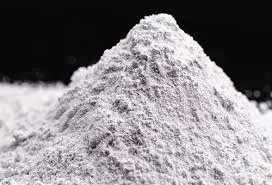
Dec . 13, 2024 11:52 Back to list
hydroxyethylcellulose based
Hydroxyethylcellulose A Versatile Polymer for Modern Applications
Hydroxyethylcellulose (HEC) is a non-ionic, cellulose-derived polymer that has garnered significant attention in various industries due to its unique properties and versatility. As an important member of cellulose ethers, HEC is produced through the reaction of alkali cellulose with ethylene oxide, resulting in a compound that possesses both hydrophilic and viscoelastic characteristics. These features make HEC invaluable across a wide array of applications, ranging from personal care products to construction materials.
Properties of Hydroxyethylcellulose
One of the most notable properties of HEC is its ability to form clear, viscous solutions in water, making it an excellent thickening agent. This viscosity is stable across a range of pH levels, which is particularly important in formulations where the pH may vary, such as in food and cosmetic products. Additionally, HEC exhibits excellent thermal stability, ensuring that products remain effective even under heat exposure.
Its water retention capabilities are equally remarkable, making it an ideal choice in cosmetic formulations aimed at moisturizing the skin. HEC forms a protective film, which helps to prevent moisture loss while enhancing the overall aesthetic appeal of the product. Moreover, being a non-ionic polymer, HEC is compatible with many other ingredients, allowing formulators to create stable and effective products without the risk of interaction or destabilization.
Applications in Personal Care Products
In the cosmetics and personal care industry, HEC serves multiple roles. It is widely used in lotions, creams, shampoos, and gels, where it functions as a thickener, stabilizer, and emulsifier. The polymer’s ability to improve the texture and flow of products enhances consumer experience, leading to a silky, luxurious feel upon application. Furthermore, HEC helps to suspend solid particles in suspension products, ensuring a uniform distribution and consistency throughout the product’s shelf life.
Another area where HEC excels is in hair care products, where it is used to produce smooth, manageable hair textures. Its film-forming property provides hold, making it beneficial in styling gels and mousses. Moreover, its moisturizing characteristics help to alleviate dryness and frizz, promoting healthier-looking hair.
hydroxyethylcellulose based

Use in Pharmaceuticals
HEC is not limited to cosmetic applications; it also plays a crucial role in the pharmaceutical industry. As a drug delivery agent, HEC can enhance the solubility and bioavailability of certain medications, especially those that are poorly soluble in water. It is utilized in the formulation of tablets, capsules, and gels, providing controlled release properties and improved stability.
In topical preparations, HEC acts as a stabilizing and thickening agent in ointments and creams. Its biocompatibility and low toxicity make it suitable for use in sensitive medical applications. As a result, HEC is frequently found in wound dressings and other medicinal formulations designed to promote healing and prevent infection.
Contribution to Construction and Coatings
The use of HEC extends beyond health and beauty products, with significant contributions to construction and coatings. In cement-based materials, HEC is employed as a water-retaining agent, ensuring proper hydration of the mix, which is crucial for strength development. Its thixotropic nature allows for easy application and improved workability without sagging or running, making it an essential ingredient in tile adhesives and sealants.
In the coatings industry, HEC is utilized for its ability to enhance the viscosity and stability of paints, varnishes, and inks. It helps to prevent sedimentation and ensures uniform distribution of pigments, contributing to an improved finish and durability of the coating.
Conclusion
Hydroxyethylcellulose is a remarkable polymer that has found its niche in diverse applications due to its unique properties. Its ability to function as a thickening agent, stabilizer, and emulsifier makes it valuable in personal care and pharmaceutical products, while its contributions to construction and coatings cannot be overlooked. As industries continue to innovate and evolve, the demand for versatile and effective ingredients like HEC will only grow, solidifying its position as a critical polymer in modern applications. Its adaptability and effectiveness ensure that hydroxyethylcellulose will remain an essential component in a wide range of formulations for years to come.
-
Versatile Hpmc Uses in Different Industries
NewsJun.19,2025
-
Redispersible Powder's Role in Enhancing Durability of Construction Products
NewsJun.19,2025
-
Hydroxyethyl Cellulose Applications Driving Green Industrial Processes
NewsJun.19,2025
-
Exploring Different Redispersible Polymer Powder
NewsJun.19,2025
-
Choosing the Right Mortar Bonding Agent
NewsJun.19,2025
-
Applications and Significance of China Hpmc in Modern Industries
NewsJun.19,2025







